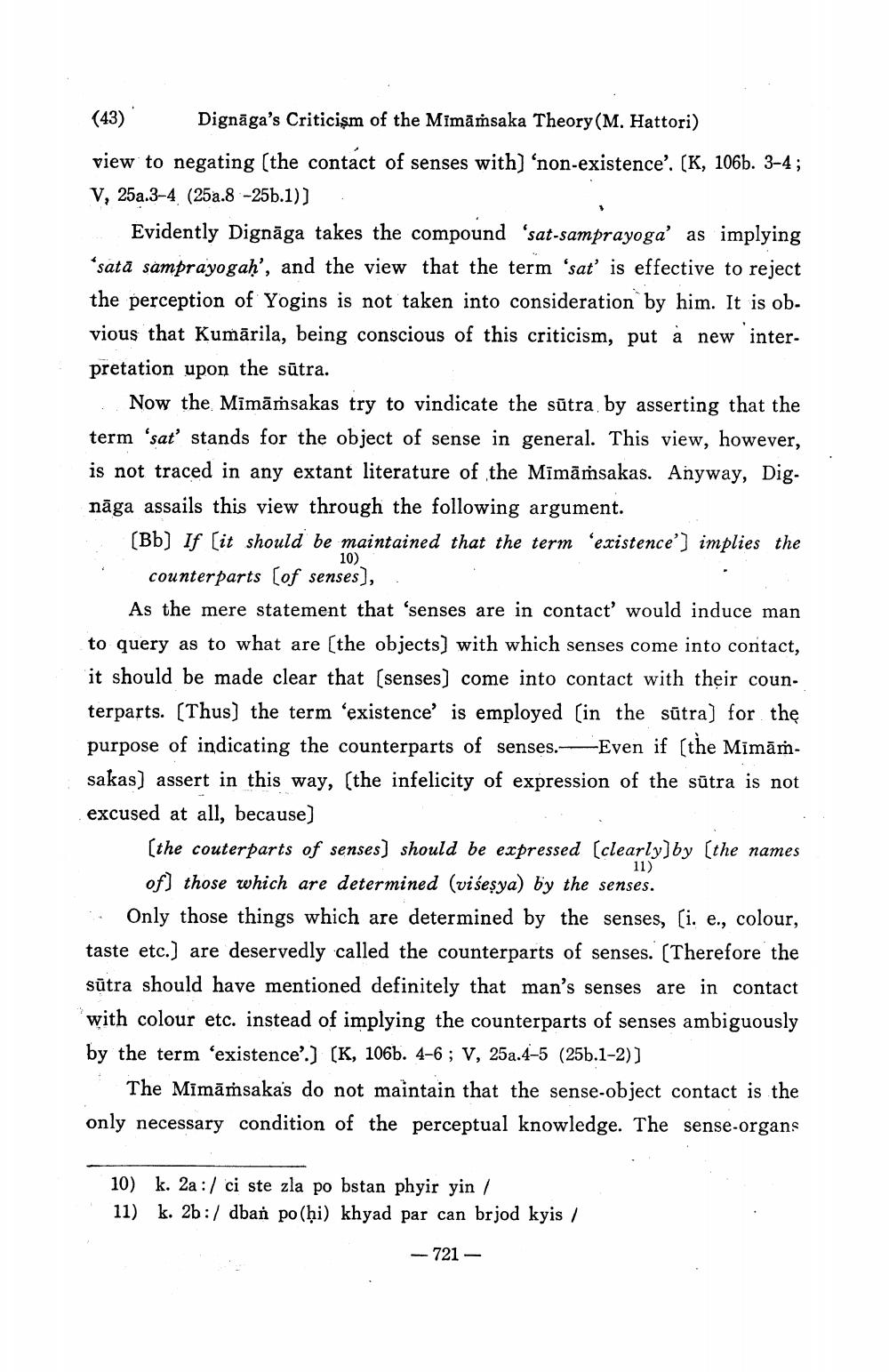Book Title: Dignagas Criticism Of Mimamsaka Theory Of Perception Author(s): Massaki Hattori Publisher: Massaki Hattori View full book textPage 4
________________ 10) (43) Dignāga's Criticism of the Mimāṁsaka Theory (M. Hattori) view to negating (the contact of senses with) ‘non-existence”. (K, 106b. 3-4; V, 25a.3-4. (252.8 -25b.1)) Evidently Dignāga takes the compound 'sat-samprayoga' as implying ‘sata samprayogaḥ', and the view that the term 'sať is effective to reject the perception of Yogins is not taken into consideration by him. It is ob. vious that Kumārila, being conscious of this criticism, put a new interpretation upon the sūtra. Now the Mimāṁsakas try to vindicate the sūtra by asserting that the term 'sat stands for the object of sense in general. This view, however, is not traced in any extant literature of the Mīmāṁsakas. Anyway, Dig. nāga assails this view through the following argument. (Bb) If (it should be maintained that the term 'existence') implies the counterparts (of senses),. As the mere statement that 'senses are in contact' would induce man to query as to what are (the objects) with which senses come into contact, it should be made clear that (senses) come into contact with their coun. terparts. (Thus) the term 'existence is employed (in the sūtra) for the purpose of indicating the counterparts of senses. Even if [the Mimāṁsakas) assert in this way, (the infelicity of expression of the sūtra is not excused at all, because) (the couterparts of senses) should be expressed (clearly]by (the names 11) of) those which are determined (višeşya) by the senses. . Only those things which are determined by the senses, (i. e., colour, taste etc.) are deservedly called the counterparts of senses. (Therefore the sūtra should have mentioned definitely that man's senses are in contact with colour etc. instead of implying the counterparts of senses ambiguously by the term 'existence'.) (K, 106b. 4-6; V, 25.4–5 (25b.1-2)] The Mīmāṁsakas do not maintain that the sense-object contact is the only necessary condition of the perceptual knowledge. The sense-organs 10) 11) k. 2a :/ ci ste zla po bstan phyir yin/ k. 2b:/ dban po (hi) khyad par can brjod kyis / - 721 -Page Navigation
1 2 3 4 5 6 7 8 9 10 11 12 13 14
